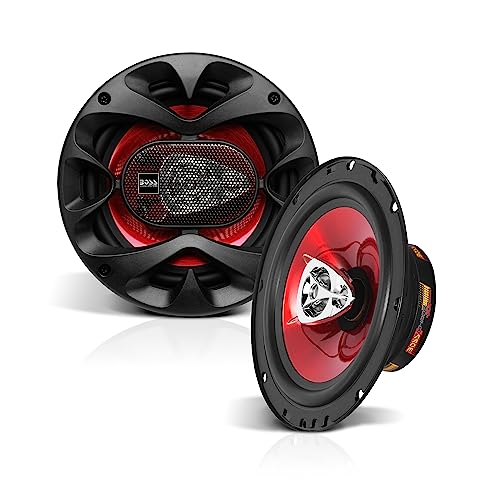As an Amazon Associate, I earn from qualifying purchases
If you own a Toyota, you know how important your car’s safety features are. One key component is the TPMS sensor, which keeps track of your tire pressure and alerts you when something’s wrong.
But what happens when you need to program or reset these sensors? You might feel stuck or unsure where to start. Don’t worry—this guide will walk you through the exact steps to program your Toyota’s TPMS sensors quickly and easily.
By the end, you’ll have the confidence to handle this task yourself, saving time and money. Keep reading to take control of your vehicle’s safety right now.

Credit: carsoftz.com
Tpms Basics For Toyota
Tire Pressure Monitoring System (TPMS) is important for Toyota vehicles. It helps keep tires safe and working well. Understanding TPMS basics makes programming sensors easier. This system alerts drivers if tire pressure is low. Proper tire pressure improves fuel efficiency and driving safety.
Learning how TPMS works helps avoid common problems. Each Toyota model may use different TPMS types. Knowing these types helps in choosing the right programming method. Let’s explore what TPMS sensors do and the types in Toyota cars.
What Tpms Sensors Do
TPMS sensors monitor the air pressure inside tires. They send pressure data to the car’s computer. If pressure drops, the system warns the driver. This helps prevent tire damage and accidents. Sensors also help maintain good gas mileage. They improve overall vehicle safety and performance.
Types Of Tpms In Toyota Vehicles
Toyota uses two main types of TPMS: direct and indirect. Direct TPMS sensors are inside the tire. They measure pressure and send real-time data. Indirect TPMS uses the ABS system to detect low pressure. It measures wheel speed to estimate tire pressure. Direct TPMS is more accurate but costs more. Indirect TPMS is less expensive and easier to maintain. Knowing your Toyota’s TPMS type is key for programming sensors.
Tools Needed For Programming
Programming TPMS sensors on a Toyota requires specific tools. These tools help read sensor data and program new settings. Using the right tools saves time and prevents errors. It also ensures your sensors work correctly after programming.
Essential Equipment
A good TPMS programming job starts with essential equipment. You need a reliable OBD2 scanner that supports TPMS functions. This device reads sensor IDs and resets the system. Next, a TPMS activation tool is necessary. It wakes up the sensor to communicate with the scanner. A tire pressure gauge is also useful. It helps check tire pressure before and after programming. Lastly, a laptop or smartphone with the proper software can assist in advanced programming tasks.
Recommended Tpms Tools
Besides the basics, some tools make programming easier and faster. A handheld TPMS relearn tool speeds up sensor registration. It works by directly communicating with each sensor. A TPMS reset tool can clear old sensor data from the car’s computer. Wireless TPMS diagnostic tools offer convenience and mobility. These tools connect via Bluetooth or Wi-Fi. They allow you to program sensors without extra cables or setups. Investing in quality tools improves accuracy and reduces frustration.
Preparing Your Toyota For Tpms Setup
Preparing your Toyota for TPMS setup is an important first step. It helps ensure the process goes smoothly and your sensors work correctly. Taking time to prepare saves effort later and avoids common mistakes.
This preparation includes checking sensor compatibility and managing your vehicle’s battery and ignition. Both steps are necessary to program the TPMS sensors properly.
Checking Sensor Compatibility
Use sensors made for your Toyota model. Not all TPMS sensors fit every vehicle. Check your owner’s manual or ask a professional to confirm compatibility.
Compatible sensors communicate correctly with your car’s system. Using the wrong sensor can cause errors or false warnings. Make sure the sensors match the model year and trim of your Toyota.
Vehicle Battery And Ignition Tips
Ensure your vehicle’s battery is fully charged. A weak battery can interrupt the setup process. Charge or replace the battery if needed before starting.
Turn the ignition on without starting the engine during programming. The car’s computer needs power to recognize the new sensors. Follow the specific Toyota instructions for ignition position.
Step-by-step Tpms Programming
Programming TPMS sensors in your Toyota ensures accurate tire pressure monitoring. This process helps maintain safety and fuel efficiency. Follow these simple steps to program your sensors correctly.
Activating Programming Mode
Start by turning the ignition to the “ON” position. Do not start the engine. Press the TPMS reset button until the tire pressure light blinks three times. This action activates the programming mode. It prepares the vehicle to recognize new sensors.
Pairing Sensors With The Vehicle
Use a TPMS tool to read each sensor’s ID. Place the tool near the valve stem of each tire. Follow the tool’s instructions to send the sensor ID to the vehicle. Repeat this for all four tires. The vehicle stores these IDs to monitor tire pressure.
Verifying Sensor Registration
Turn off the ignition and then start the engine. Check the dashboard for the tire pressure warning light. The light should turn off if sensors are registered correctly. Confirm by driving a short distance. The system must show no error signals.
Troubleshooting Common Issues
Troubleshooting common issues with Toyota TPMS sensors helps keep your vehicle safe. Many problems have simple fixes. Understanding these can save time and money. Follow these steps to identify and solve typical TPMS sensor problems.
Sensor Not Detected
A sensor not detected usually means the system cannot find the tire sensor signal. This can happen if the sensor battery is dead or the sensor is damaged. Dirt or debris on the sensor can also block the signal. Check the sensor condition and clean the area around it. Replace the sensor battery or the whole sensor if needed.
Error Codes And Fixes
Error codes tell you what is wrong with the TPMS system. Use a TPMS scan tool to read these codes. Codes can show low battery, sensor failure, or communication problems. Match the code to the problem and apply the correct fix. Sometimes, replacing the sensor or repairing wiring solves the issue.
Resetting The Tpms System
Resetting the TPMS system refreshes the sensors and clears errors. This step is needed after fixing or replacing sensors. To reset, use the car’s menu or a TPMS reset tool. Follow the Toyota manual instructions closely. Resetting ensures the system reads all sensors correctly and stops warning lights.

Credit: www.4runners.com
Maintaining Tpms Sensors
Maintaining your Toyota’s TPMS sensors is important for safe driving. Proper care helps keep tire pressure accurate. This avoids tire damage and improves fuel efficiency.
Regular maintenance extends the life of your sensors. It also prevents warning lights from appearing on your dashboard. Simple steps can keep your TPMS sensors working well.
Battery Life And Replacement
Most TPMS sensors use small batteries. These batteries usually last 5 to 10 years. Over time, batteries lose power and need replacement. Dead batteries cause the sensor to stop sending signals.
Replacing the battery requires removing the sensor from the tire. It is best done by a professional. Some sensors need full replacement when the battery dies.
Regular Sensor Checks
Check your TPMS sensors regularly for proper function. Use a TPMS tool or visit a service center. Sensors can be damaged by road debris or tire changes.
Regular checks catch problems early. This helps avoid false warnings or sensor failure. Keep sensors clean and free from dirt for best results.

Credit: www.youtube.com
Frequently Asked Questions
What Is A Tpms Sensor In Toyota Vehicles?
A TPMS sensor monitors tire pressure and alerts you if pressure is too low.
How Do I Know If My Toyota Tpms Sensor Needs Programming?
If the TPMS light stays on after tire changes, programming is likely needed.
Can I Program Toyota Tpms Sensors Without Special Tools?
Most Toyota models require a TPMS tool or scanner for programming sensors.
How Long Does It Take To Program Tpms Sensors On Toyota?
Programming usually takes 10 to 20 minutes per sensor with the right tool.
Do I Need To Reset The Tpms System After Programming?
Yes, resetting the TPMS system lets the car recognize the new sensor data.
Is Programming Tpms Sensors Necessary After Replacing Tires On Toyota?
Yes, programming ensures the new sensors communicate properly with your Toyota’s system.
Conclusion
Programming Toyota TPMS sensors is a simple task with the right steps. Follow the instructions carefully for accurate results. Regularly check your sensors to keep your car safe. Proper TPMS function helps avoid tire issues and saves money. Stay patient and take your time during programming.
This guide makes the process clear and easy to do. Your Toyota will alert you quickly if tires lose pressure. Keep your driving smooth and worry-free by maintaining TPMS sensors.
As an Amazon Associate, I earn from qualifying purchases


